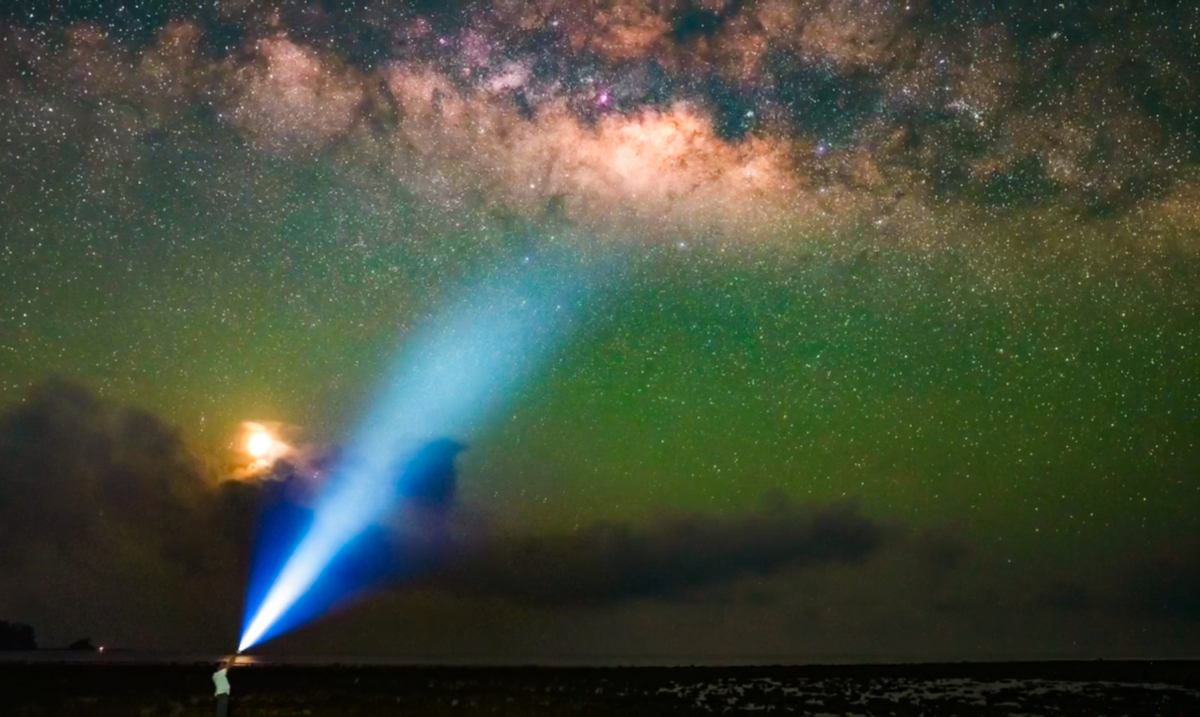Dark Sky Tourism and Stargazing Experiences in Andaman & Nicobar Islands
The Andaman & Nicobar Islands, known for their azure waters, lush tropical forests, and white sandy beaches, also offer an extraordinary opportunity to experience the cosmos. With minimal light pollution and clear skies, the islands have become an emerging hotspot for astro tourism. The vast expanse of the night sky here provides perfect conditions for stargazing, astrophotography, and astronomical education. Visitors can now blend their tropical holiday with a celestial journey into the universe, where planets, constellations, and distant galaxies can be observed in unparalleled clarity.
Why Andaman & Nicobar for Astro Tourism?
The pristine location of the Andaman & Nicobar Islands, far removed from major urban centers, gives it an advantage in terms of reduced light pollution. The islands’ remote and natural environment provides stargazers with some of the clearest views of the night sky. The tropical climate, combined with clear nights for most of the year, further enhances the astro experience. Whether you are an amateur star lover or a seasoned astronomer, the islands offer something for everyone. The growing popularity of eco-tourism and sustainable travel has also contributed to the rise of astro tourism here, making it an essential part of the islands’ tourism portfolio.
Key Existing Astro Spots in South Andaman
1. Science Centre (Port Blair)
- Overview: The Science Centre in Port Blair is a well-established hub of scientific learning and discovery. Since its opening in 2003, it has been a significant educational and recreational destination for tourists.
- Astro Attraction: The Science Centre conducts regular sky observation programs in the evening, allowing visitors to explore celestial bodies such as stars, planets, and even Saturn’s rings through professional telescopes. They feature both 6-inch and 8-inch telescopes that offer great views of constellations, planets, and deep-sky objects.
- Other Activities: Along with the astronomical viewings, the Science Centre also houses several interactive exhibits that educate visitors about space, the solar system, and scientific phenomena.
- How to Reach: The Science Centre is located 3 km from Port Blair’s main bus stand, easily accessible by taxi or auto-rickshaw.
2. Whistlingwoods (Beodnabad)
- Overview: Situated on the outskirts of Port Blair, Whistlingwoods is a tranquil farm-lounge offering a perfect escape for stargazers. It lies en route to the famous Chidiyatapu beach, a popular spot for bird watching and sunsets.
- Astro Attraction: Whistlingwoods is equipped with high-end telescopes such as a 12-inch Newtonian reflector and an 8-inch GPS-based telescope. Visitors can take part in both casual stargazing sessions and specialized deep-sky astrophotography workshops, which are perfect for those looking to capture stunning images of the night sky.
- How to Reach: It is located about 14 km from Veer Savarkar International Airport in Port Blair.
3. Kodiyaghat
- Overview: A peaceful beach located en route to Chidiyatapu, Kodiyaghat offers the serenity needed for an uninterrupted stargazing experience.
- Astro Attraction: The area’s low levels of artificial light make it one of the best open spots to observe constellations and celestial bodies with the naked eye. The beach provides a perfect natural platform for stargazing under a canopy of stars.
- How to Reach: Located approximately 20 km from Port Blair, Kodiyaghat is accessible by road. It is a short drive from the main town and an excellent spot for an evening of stargazing by the sea.
Proposed Astro Spots
With the growing interest in astro tourism, new locations in Andaman & Nicobar are being identified and developed for stargazing and night sky observation (As per the Draft of Andaman and Nicobars’ Astro Tourism Policy). Below are some proposed locations with great potential for future astro tourism.
1. Mount Manipur National Park
- Overview: This national park, formerly known as Mount Harriet, is one of the highest points in South Andaman, standing at 383 meters above sea level. It offers breathtaking views of the surrounding islands and the night sky.
- Astro Attraction: The park’s elevation, combined with its natural surroundings, creates an ideal environment for stargazing. The lack of artificial light and the park’s remote location make it a potential astro tourism hotspot. Visitors can observe the Milky Way on clear nights and enjoy panoramic views of constellations.
- Other Attractions: The park is steeped in history, as it was once a major administrative post for the British. Historical remnants like WWII anti-aircraft guns can still be seen.
- How to Reach: Take a short ferry ride from Chatham to Bambooflat, followed by a road journey to the park.
2. Wandoor Beach
- Overview: Wandoor Beach is already famous for its stunning coral reefs and as the gateway to Mahatma Gandhi Marine National Park. The beach’s isolation makes it an ideal destination for quiet evenings of stargazing.
- Astro Attraction: Due to its distance from city lights, Wandoor Beach offers a wide-open view of the night sky, making it perfect for observing stars and planets. It’s a serene location to set up a telescope or lie on the sand and simply gaze up at the stars.
- How to Reach: Located about 25 km from Port Blair, Wandoor is easily accessible by road. A visit to the beach is often combined with a trip to the marine national park.
The Future of Astro Tourism in the Andaman & Nicobar Islands
Astro tourism in the Andaman & Nicobar Islands is still in its nascent stages but shows tremendous promise. With the region’s natural advantages—minimal light pollution, clear skies, and tranquil surroundings—these islands have the potential to become a global destination for stargazing enthusiasts. As infrastructure for tourism continues to grow, more astro spots are likely to be identified, and existing ones will see further development.
Collaborations with local astronomers, eco-friendly accommodations, and the introduction of specialized tours for stargazing and astrophotography can enhance the appeal of astro tourism. Offering these unique experiences will not only diversify the islands’ tourism portfolio but also promote sustainable and responsible travel.
Best Time for Stargazing in the Andaman & Nicobar Islands
The tropical climate of the Andaman & Nicobar Islands makes stargazing possible for most of the year. However, the best time to visit for a clear night sky is during the dry season, between November and March. This period sees little cloud cover, and the nights are generally clear, offering optimal conditions for astro tourism.
Astro Tourism Policy of Andaman and Nicobar Islands
Astro tourism in the Andaman & Nicobar Islands operates within the framework of sustainable tourism policies that prioritize environmental preservation, community involvement, and responsible travel practices. Here’s an overview of the key policies and principles guiding the development of astro tourism in the region:
1. Light Pollution Control
One of the main requirements for astro tourism is the reduction of artificial light pollution. The Andaman & Nicobar administration aims to enforce guidelines that limit excessive outdoor lighting in and around key stargazing areas. Measures like using downward-facing lights and dimmer, energy-efficient bulbs are encouraged to preserve the natural night sky.
2. Sustainable Development
Infrastructure for astro tourism, including accommodations, observatories, and public viewing areas, is being developed with a strong emphasis on eco-friendly and sustainable practices. The focus is on maintaining the delicate ecological balance of the islands, ensuring that any new developments do not disrupt local biodiversity or ecosystems.
3. Community Involvement
Policies encourage the involvement of local communities in promoting astro tourism. This includes providing employment opportunities in guiding tourists, hosting stargazing events, and contributing to environmental conservation efforts. It ensures that the local population benefits economically from tourism while also fostering a deeper connection between visitors and the local culture.
4. Educational Programs
The promotion of astro tourism is tied to educational initiatives aimed at both visitors and locals. Workshops, talks, and guided tours about the night sky, space science, and environmental protection are organized, particularly in collaboration with institutions like the Science Centre in Port Blair. This creates a dual benefit of raising awareness about astronomy and instilling a respect for the environment.
5. Visitor Management
To prevent overcrowding and potential environmental degradation, the administration is working on visitor management strategies. These include limiting the number of tourists at key astro tourism sites during peak times and encouraging off-season visits to distribute footfall more evenly throughout the year.
6. Conservation of Natural Heritage
Astro tourism is aligned with broader conservation policies in the Andaman & Nicobar Islands. As part of eco-tourism, it aims to promote a minimal footprint approach, ensuring that stargazing and other activities do not interfere with the natural habitat of wildlife, especially in protected areas like national parks and marine reserves.
7. Research and Collaboration
Astro tourism policy also includes collaboration with national and international astronomy organizations, research institutions, and universities. This partnership helps in the development of better facilities, research initiatives, and educational programs that enhance the overall experience for tourists while contributing to scientific knowledge.
In summary, the policy surrounding astro tourism in the Andaman & Nicobar Islands focuses on protecting the natural environment, promoting sustainable practices, and creating enriching, educational experiences for tourists.
The Andaman & Nicobar Islands offer a rare blend of natural beauty and celestial wonders. As interest in astro tourism grows, these islands are emerging as a prime destination for those looking to connect with the universe. Whether you’re a seasoned astronomer or simply curious about the night sky, the islands provide a perfect opportunity to witness the cosmos in all its glory. From observing the stars at the Science Centre in Port Blair to capturing deep-sky images at Whistlingw
oods, the Andaman & Nicobar Islands promise a celestial journey unlike any other.

